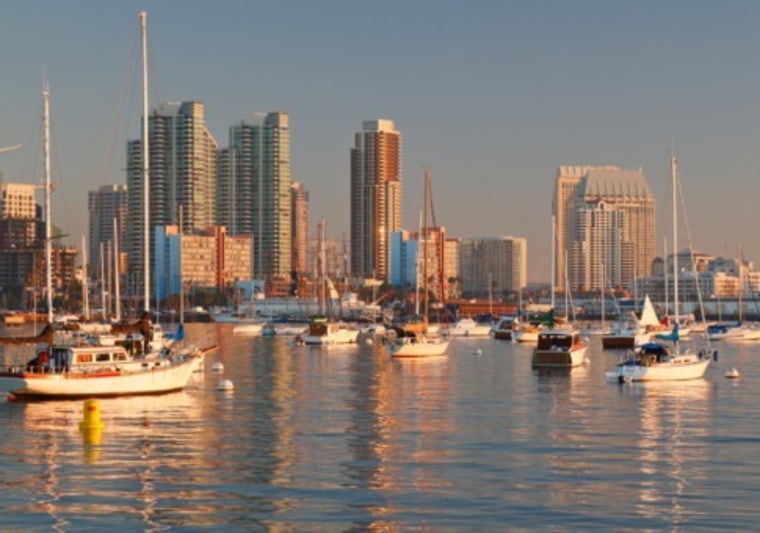Milwaukee, Wis., is home to Miller Brewing, one of the country's biggest beer makers. That's good news for home-sellers there, they probably need a drink more than ever. Milwaukee is the big city with the worst-selling housing market in America.
Last year in Milwaukee, unsold homes clogged the market — 42 percent more at the end of 2009 than the same time the previous year. During the housing boom, developers built copious luxury condominiums to meet rising demand, often far from the city center. Now that the market has contracted, those gleaming but remote designer apartments are harder than ever to sell, affecting the larger housing market.
"The single-family market is competition for condos," says Jonathan Miller, president of Miller Samuel, a Manhattan-based real estate appraisal company. "Housing gets pulled up along with condos because the luxury market sets the bar so high. When that market freezes up, sales of single-family homes drop more than they would otherwise."
Many of America's major cities are saddled with thousands of unsold homes. Speculative buyers spurred overbuilding in markets like San Diego, Atlanta and Los Angeles during the housing boom, and those homes were left to languish once the bubble burst. In other cities that have been struggling economically for years, like Cincinnati and Cleveland, more and more lost jobs mean demand can't keep up with supply.
To find America's worst-selling cities, we started with all the Metropolitan Statistical Areas in the U.S. with populations over 1 million. Next we further narrowed the list to the MSAs with the biggest two-year sales price drops for single-family homes, based on data from the National Association of Realtors.
Two cities we left out were Detroit (which would have likely ranked highly), and Nashville. For these cities, sale price data was not readily available.
Then we looked at the change in the number of single-family home sales between 2008 and 2009, with data from Moody's Economy.com, and cities where inventory was rising — a worrying sign that homes are increasingly stagnating on the market — using data from Zillow. The cities were ranked according to the biggest inventory increases and biggest drop in home sale numbers between the fourth quarter of 2008 and the fourth quarter of 2009. Those two metrics were then averaged for each city to determine our top 10.
Some cities, such as New York and San Francisco, make the list in large part because our data focused solely on single-family homes. In those two cities, the condominium market has a far greater impact than it does on other cities' real estate markets. It's likely condo sales in these cities are stronger than single-family home sales.
Before 2009, if any market seemed to be free from the rest of the country's housing woes, it was. But the city's fortunes seem to have shifted: The recession hit Denver later, and only in the past year have sales slowed and inventory begun to pile up. The number of unsold homes rose 27 percent year-over-year, and sale prices were flat, pushing the city up to the No. 2 spot.
But things are far worse further west in California, which has three cities on our list: Los Angeles, San Francisco and San Diego. New California homes were built in spades during the housing boom. In San Diego subprime lending soared; in Los Angeles speculative buying was a big part of the problem. With cheap and free-flowing financing everywhere, buyers jumped to occupy those homes.
When those easy mortgages turned to foreclosures and banks clamped down on financing, weak sales and soaring inventories resulted. Sales in Los Angeles fell last year by 5 percent; inventory ballooned 36 percent in San Francisco; in San Diego home sales posted among the smallest increases of cities we looked at — just 3 percent. Although Sacramento, Calif., just missed making our top 10, home sales fell by 30 percent in that city as well.
"California was the birthplace of subprime lending," says Miller. "There was a tremendous amount of subprime mortgage abuse in those cities, and now they have to unload all of this product."
Former manufacturing hubs in the Midwest have it rough as well. High unemployment combined with the nationwide financial crisis has left fewer families in a position to buy homes, causing real estate markets to stagnate. Cincinnati, for example, has seen the biggest year-over-year inventory increase of all the cities we measured, at 48 percent. Inventory in St. Louis, Mo., rose by 36 percent, and similar problems afflict Cleveland and Milwaukee.
"As a region, the Rust Belt was hard-hit," says Miller. "Cleveland and Cincinnati have had a tremendous amount of foreclosures."
Home prices are down in New York and San Francisco, though they're still astronomical compared to those in other metros. In New York sale prices fell 13 percent between 2008 and 2009, and in San Francisco they fell 6 percent over the same period.
Perhaps prices haven't fallen far enough, as cash-strapped New Yorkers and San Franciscans don't seem to be buying. New York has 13 percent more inventory than it did last year, and while sales in San Francisco have risen a slight 4 percent, that's one of the smallest increases of any city we looked at.
How well homes are selling is only one economic indicator. But when homes aren't being bought, that delays nearly every other aspect of economic recovery. And with national unemployment at nearly 11 percent, house-hunting isn't on most people's agenda.
"In today's market, you actually need a job to get a mortgage," says Miller.
